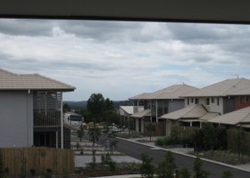 1. Landlords and Real Estate People rarely think about how they should not be landlords. The real estate market is a fluctuating area and success is definitely not assured. Of course, if youve got what it takes to be a landlord, you can turn this into a very profitable business. It is important to choose the investment property you purchase intelligently. 2. Take into account time Contemplate maintenance and time when searching for investment properties to buy. Owning a place for 20 years generally means that you will have to replace its roof at some point. In contrast, if you plan to own it for five years, it is not profitable to spend a lot on repairs. Many people who look for an investment property for sale find long-term ownership more profitable, as the value of the property will almost certainly increase. In five years, the value of the property can also decrease, especially if it is located in an overheated area. 3. Finding investment properties If you want to find an investment property for sale, it is very important to build a network of people that can help you with some valuable information. Investors sometimes use the advertisements in local newspapers, the services of a real estate agency or make friends with bank employees or city hall clerks to keep them informed. Some of them recommend joining a local landlord association and making contacts. You can also approach the landlords directly and see if theyre willing to sell, using the phone numbers listed in newspapers along with their rental ads. 4. Preparation for loans When you have a good credit rating its easier to get a good loan. The required down payment and interest rates are usually higher for an investment property than for a residential home. You should also have a cash reserve after you bought the property to cover for any unexpected repairs. Before investing in a property, make sure you can save enough for retirement, children education and other goals you may have. People should be way of depending on rentals as income.
 When it comes to deciding on which type of Investment property to invest in, there are a number of options that can be pursued. For the residential option, you might be willing to invest in apartments, flats, independent houses, bungalows and others. There is no end to the commercial and institutional property options as well. You can put your money in the retail shops and stores, office spaces, schools, colleges, etc. Similarly, the investment can be done in farmhouses, recreational facilities like resorts, hotels and restaurants and many others. Each of these properties has its own set of peculiar features. However, for investment property purposes, it is the residential and the commercial properties which are most commonly used. Benefits of investment in commercial propertyThere is no doubt that the commercial property is far more expensive than the residential one. The most obvious reason for this is that the space for commercial property is limited and there is always a huge demand for this. The reason for good demand for the commercial property is that the appreciation in the rates of this is higher than in case of higher property types. It might be more expensive to get it in the first place but once you are through the deal and own a property, generally you end up with good returns. Also, there is one more advantage as compared to the residential property investment . This advantage is that of getting more rental incomes as well. If you decide to rent out the commercial property which you have invested in, there is good likelihood that there will be greater rental income. Commercial investment property scores over the residential one. There are more residential properties than the commercial ones and therefore there is a greater market activity in the residential segment. At the same time, there is paucity of space for retailing businesses and office spaces. This pushes up the demand for these spaces in a growing economy since there are increasing number of customers looking for better spaces. So, even though the market activity in this segment is lesser, there are greater returns to be taken. At the same time, market activity is not so less as to render it a less profitable investment. Other factors affecting returns in commercial Investment propertyCommercial property is a good investment choice in general, as compared to the residential one, in terms of returns that can be got both on sale and by putting it up on rent. However, there are other factors which might also impact the rate of returns. Scale on which the commercial properties are being developed in comparison to the residences is one factor. Location of the property is another factor which would affect the prices of sale or rent. Whether that commercial area is being invested by large corporate or by small time business owners is another factor which can determine the character of commercial space that is emerging out to be. All these factors also affect the investment property decisions for the commercial properties.
For more information about Investment Property visit
 Is there really a 100% safe way to invest in real estate? No, there is NO plan that will guarantee your success. No one can guarantee that you will make a profit. However, if you follow these guidelines, you will have a greater chance of being successful. Instead of potentially making costly mistakes, you will be able to generate a steady stream of extra income and you will be building your equity. The following topics will be covered in this series of articles: Setting clear investment objectives, How to find profitable investment properties, How to mine properties for profit, How to make the initial offer, Navigating the financial maze, Closing the Sale, How to select a remodeling contractor, Renters, Renters, Renters, Tax Time - Pay uncle Sam, Miscellaneous real estate investment factors. Let's start on the road to discovery:Setting Clear Investment ObjectivesStart with a set of clear objectives for any property you intend to buy. You might be asking what is the relationship between real estate investing and objectives. The investment objectives will give you the track to run on. There is a direct relationship between the level of clarity about what you want and virtually everything you accomplish in life. Successful men and women invest the time necessary to develop absolute clarity about they really want. It is like designing a detailed blue print for building a custom home before they begin construction. Like a blueprint for a building, your investment goals must be written down on paper. Do NOT skip this step or you will be helping some else accomplish their objectives. Start by writing your investment goals or strategies on paper. Which money making strategy is best for you depends on your tolerance for risk. You might be happy making only 15% on a quick sale, or you may need $100,000 a year to maintain your current living style. You might want to build your current net worth over time, getting continuous appreciation on your properties, and generate some extra income or enough rental cash to become financially independent. Keeping a clear picture of your investment objectives will increase the likelihood of finding the right properties. Your investment objectives will also need to include some of the following items: What kind of home should it be, Single family vs. multifamily, condo or detached, how many rooms will the property have, a good or medium neighborhood, age of the property, who will maintain your properties, high priced or low priced. You will need to determine how long, you want to hold the investment property. Are you planning to flip your investment in 5 years or less? In this case, you might want maximize your monthly return by obtaining a low variable rate for 5 years. If this is your objective, it might be necessary to take some precautions in order to avoid getting burned in the fifth year. For instance, start looking to refinance the mortgage loan in the middle of the fourth year. If your aim is to hold the investment property for 20 or 30 years, then the approach needs to be different. You can still choose to pay off the property in a short period of time. In this instance, you might want to get a 15 year mortgage. Another important factor that needs to be taken into account is the age of the investment property. It is a good idea to select properties that are under 10 years old in order to avoid that high maintenance fees that come with an older home. Please remember that the secret to long term real estate investing is renting the property for less or close to your yearly expenses. Do not forget to make your objectives SMART:1. Specific - Your objectives need to specify what you want to achieve in detail. 2. Measurable - You should be able to measure whether you are meeting the objectives or not. 3. Achievable - Are the objectives you set, achievable and attainable? 4. Realistic - Can you realistically achieve the objectives with the resources you have? 5. Time - When do you want to achieve the set objectives? Now that you have a clear set of objectives, it is time to start searching for our investment property visit us at Beach Sea Pty Ltd today!
 You may have heard about the National Rental Affordability Scheme (NRAS), an Australian government plan to improve private investment in affordable rental housing across the country. People in suitable NRAS properties acquire generous government incentives in exchange for agreeing to rent their home to an approved tenant at 2011-12 below the market price. Generally, the bonus funds over cover the reduction in rental income. In reality, oftentimes, the funds can even make the home into a cashflow positive investment. However, many individuals are not sure what exactly an NRAS house is. Read on to learn.
NRAS properties must be residential properties that are brand-new. You cannot add a current rental property to NRAS. In all other respects, NRAS properties are identical to other residential properties available on the market. They may be separate houses, units or townhouses. On average they come with a range of turn-key features, such as for example curtains, TV factors, gardening and appliances. These features mean that the home is ready to let the moment it is sold - the first tenant can simply turn the key and move-in.
The location of properties can also be essential. Properties can just only be accepted for NRAS if they're in regions of high rental demand. This need might be brought on by the location's acceptance, desirable characteristics, o-r undersupply of rental stock. In any case, it's good news for people as it means that the home is likely to be located in an area where there are plenty of available tenants, reducing the risk of an extended vacancy time.
You may well be wondering how a standard home becomes entitled to NRAS. Typically, a designer will fill out an application to the government for a few of its stock to be approved for participation in NRAS. This should be done in minimum lots of 100 houses. In any given postcode, only half an hour of the investment could be approved for NRAS, although generally this percentage is much lower. NRAS properties will be scattered throughout the development.
When the government has approved the developer's request, the properties can be purchased through house agents that partner with the creator. These agencies can assist the buyer to perform the necessary paperwork to make sure that their NRAS property is maintained effectively and they get their incentives at the right times. It is really a serious easy process.
Once accepted, NRAS properties remain eligible for incentives for a ten year period. The owner has the right-to remove their property from your plan at any time, for instance should they need to sell the property, or transfer to it them-selves. They keep all the conventional rights of a landlord, such as the right to choose from a pool of qualified tenants.
One final topic to consider is exactly how many NRAS properties can be found. The federal government has made a decision to accept 50,000 in total. At the time of 2012, over 33,000 rewards had already been designated, with over 6,000 already completed and tenanted. Consequently, there's no infinite source of NRAS properties, and people wishing to purchase one must act next 18 months to prevent frustration.
 After the housing bubble burst in the USA, property investors around the world became wary, and with good reason. Property wasn't such a sure thing, unlike in the past, when investing in property was considered to be one of the wisest moves one could make. Now, worldwide, there's a severe shortage of affordable housing, as rental rates continue to climb. But in Australia, the government has enacted a plan that benefits both the renter and the investor, with cheaper rental rates and cash incentives for the investor. So, if you're looking to invest in a property with a guaranteed annual cash flow, then it's time to educate yourself about NRAS. The National Rental Affordability Scheme (NRAS) was launched in 2008 as a way to boost the market for lower-cost rental units while encouraging property investment through tax-free incentives. Projected figures showed a drastic shortage of affordable housing for families and public service workers, and so the NRAS program was created to entice investors to help fill in that gap. The goal is to increase the number of affordable rental properties across the country by 50,000 by the year 2014. Here's how the program works. An investor with a property currently rented at the given market rate applies for the NRAS program. When the investor reduces the rental rate by 20%, the Australian government provides a tax-free incentive per annum, for ten years, after which the rental rate returns to normal. The incentive follows the CPI and in 2011 it worked out to be $9,524 per annum. The Australian government promises that investors will earn from $91,400 to $109,000 over the ten-year period of ownership. That's a lot of money to collect tax-free! Of course, the tax-free cash incentive isn't the only reason to invest through the NRAS program. An investor advertising through the NRAS program retains full control of tenant selection. Indeed, the program is largely geared toward creating affordable housing for several key groups: families, over 55s and service workers such as police officers and nurses. All tenants applying for NRAS Property must also be NRAS-certified which effectively requires them to have an income below a particular threshold. Also, in contrast to government-subsidized housing, the investor retains a modicum of control over the rental rate, since this is determined by the going market value. With the rent lowered and such a large pool of eligible tenants to choose from--an estimated 1.5 million tenants--an investor will find it easier to fill their rentals and won't have to worry about a surplus of vacant homes or apartments. It's clear the Australian government is committed to this program, even in the face of the floods that devastated Queensland in early 2011. While the government did announce plans to divert roughly $264 million in funding away from the NRAS program and into clean-up and recovery efforts, they are still funding incentives on over 35,000 properties across the country, leaving investors with plenty of options for joining in this exciting new investment opportunity.
 Many clients, when they first hear about the NRAS property opportunity, ask me whether NRAS is just another form of social housing. In fact, NRAS is creating an entirely new class of housing in the Australian market, and does not resemble social housing at all. This article explains the difference between affordable housing and social housing and shows you why affordable housing is such a great investment.
Firstly, if you aren't sure what NRAS is, I'll give you a quick run down. NRAS stands for National Rental Affordability Scheme, and is an Australian federal government program to tackle the housing affordability crisis by encouraging more private investment in affordable rental accommodation. In short, the government is offering to pay generous incentives to investors who offer to rent their property at 20% below the market rate to eligible tenants. Currently, these incentives are valued at over $9,000 per year in tax free income and are offered for a ten year period.
However, while the NRAS program aims to provide more affordable rental accommodation to Australian tenants, this does not make it social housing. Social housing is undesirable from an investment point of view for a number of reasons, partly because of investor concerns about the quality of tenants and partly because social housing is unfortunately often constructed in large estates or apartments blocks. This devalues each individual property within the development as it is located in an overall area of disadvantage.
Fortunately, NRAS homes do not have any of these characteristics. NRAS homes are required to be scattered throughout communities at a maximum density of 30%. They must also be of a similar value to nearby properties. This means that NRAS homes are essentially no different to a normal investment property of a similar value, and ensures that NRAS tenants remain integrated within the wider community.
Another difference between social housing and NRAS affordable housing is the tenant eligibility requirements. While social housing is available to only the most marginalised members of our communities, NRAS has very generous eligibility criteria. NRAS was designed to relieve rental stress on ordinary, low to moderate income working families. In fact, the income eligibility criteria are so generous that the average rental household is eligible for NRAS. The Australian government estimates that 1.5 million households across Australia are eligible to participate in NRAS.
Because NRAS properties are rented at 20% below the market rate, they will always be very attractive to tenants, and because so many households are eligible for participation in NRAS, it can be expected that there will always be a lot of competition for these properties. This means that as an NRAS landlord, you can be very discerning in picking tenants.
Additionally, because there is no essential difference between and NRAS property and its neighbouring properties, you will still have a quality asset at the end of the ten year program, unlike social housing which devalues rapidly. All in all, NRAS affordable housing is a very different class of asset to social housing, and one that offers a range of appealing characteristics to the discerning property investor.
|






 RSS Feed
RSS Feed